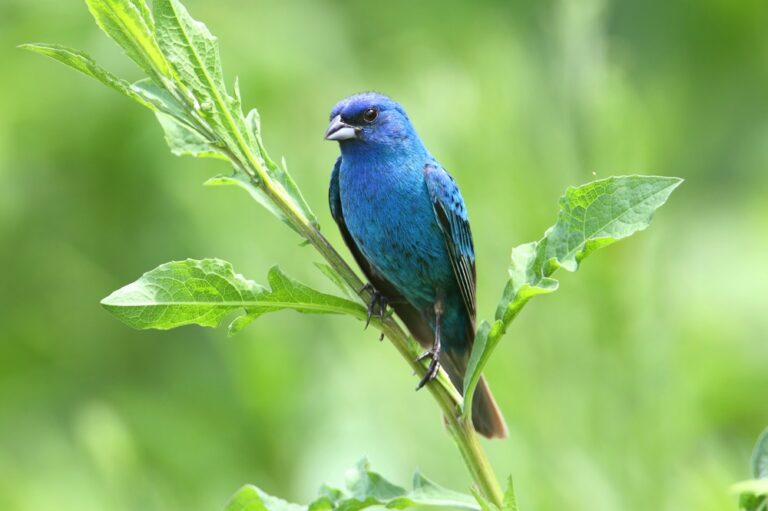In an unexpected twist, the vibrant Indigo Bunting bird has become a key player in the thriving world of financial tourism at Berkeley Creek Park. Known for its striking blue plumage and melodic song, the Indigo Bunting is now drawing nature enthusiasts, birdwatchers, and investors alike to the park, driving a surge in both eco-tourism and local economic growth.
The stunning bird, which has long been a favorite among birdwatchers, has recently been marketed as a unique asset that blends nature, tourism, and financial opportunity. Local authorities and conservationists have found a way to combine these elements by offering exclusive “Indigo Bunting Experience” packages. These experiences are priced at $55—a premium rate that has sparked considerable interest. The fee covers guided tours, birdwatching events, and educational seminars about the ecological importance of the Indigo Bunting and other native species in the area.
A Rare and Coveted Experience
The Indigo Bunting’s sudden prominence is no coincidence. These birds, though once commonly spotted in various parts of North America, are now increasingly rare in many areas due to habitat loss and other environmental pressures. Berkeley Creek Park, with its rich diversity of flora and fauna, has become one of the premier locations for viewing these elusive creatures. Visitors can embark on curated excursions with expert guides who lead them to prime birdwatching spots within the park.
The $55 price tag has sparked discussions around the intersection of conservation and commerce. The fee not only provides a rare opportunity to witness the beauty of the Indigo Bunting in its natural habitat, but it also supports ongoing conservation efforts at Berkeley Creek Park. Local wildlife experts emphasize that funds generated from these tours help preserve the park’s ecosystem, ensuring that both the bird species and the natural environment thrive for years to come.
Economic Benefits for Berkeley Creek Park
The influx of tourists has brought more than just environmental awareness—it has generated a significant boost to the local economy. Hotel bookings, local eateries, and souvenir shops around Berkeley Creek Park are seeing increased traffic as birdwatching enthusiasts flock to the area. Additionally, the park has become a hotspot for financial tourism, a term that blends eco-tourism with investment opportunities. Visitors not only experience the natural beauty of the park but also engage in financial opportunities tied to the preservation of the area.
The $55 tour package has proven to be a smart investment in more ways than one. It has spurred a sense of pride within the community, as residents and local businesses benefit from the park’s newfound popularity. Moreover, the exclusivity of the experience adds to its allure, attracting affluent individuals seeking unique, high-quality travel experiences that support environmental causes.
The Future of Financial Tourism at Berkeley Creek Park
As the success of the Indigo Bunting Experience continues to grow, Berkeley Creek Park is exploring new ways to leverage its natural resources while maintaining a commitment to conservation. Potential future offerings may include more exclusive packages, such as private birdwatching tours, wildlife photography workshops, and “eco-investment” events that allow tourists to contribute to the park’s growth while enjoying an unparalleled nature experience.
Local officials are also in discussions to expand the park’s educational programs, which teach visitors about sustainable tourism and how they can make a positive impact on the environment. The vision is clear: to create a sustainable, profitable ecosystem where both nature and the local economy can flourish.
Conclusion
Berkeley Creek Park’s financial tourism model, built around the captivating Indigo Bunting, is a novel approach that demonstrates how conservation and commerce can work hand-in-hand. As more visitors flock to the park to experience its natural beauty and rare wildlife, the $55 price tag is not just a premium for an exclusive experience—it is an investment in the future of both the park and the surrounding community. In this way, the Indigo Bunting has become more than just a bird; it is a symbol of how environmental stewardship and economic growth can soar together.


